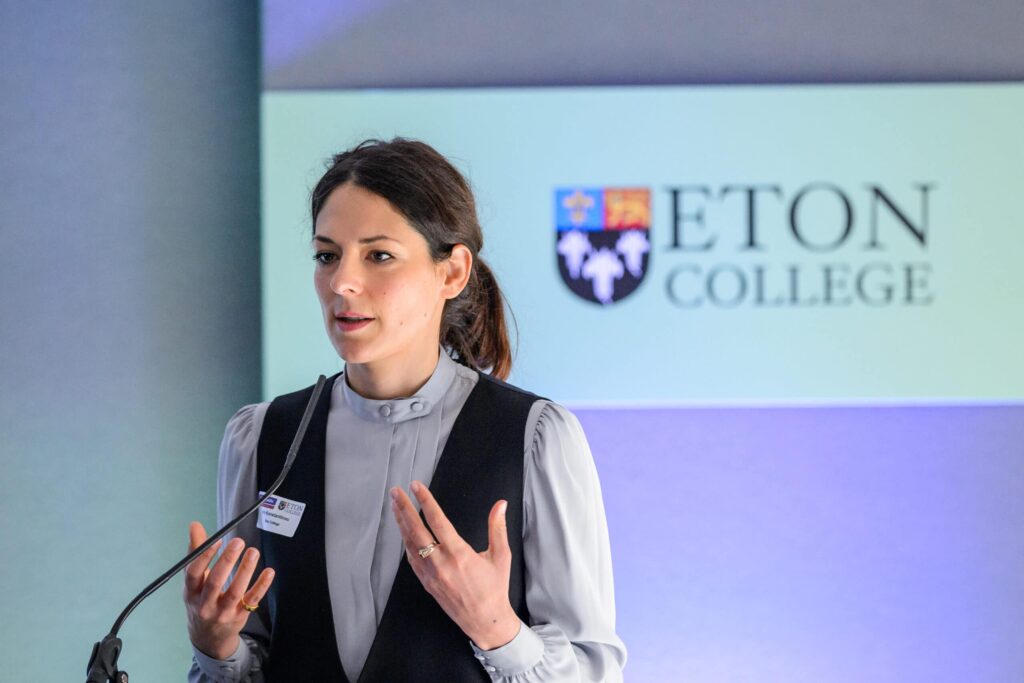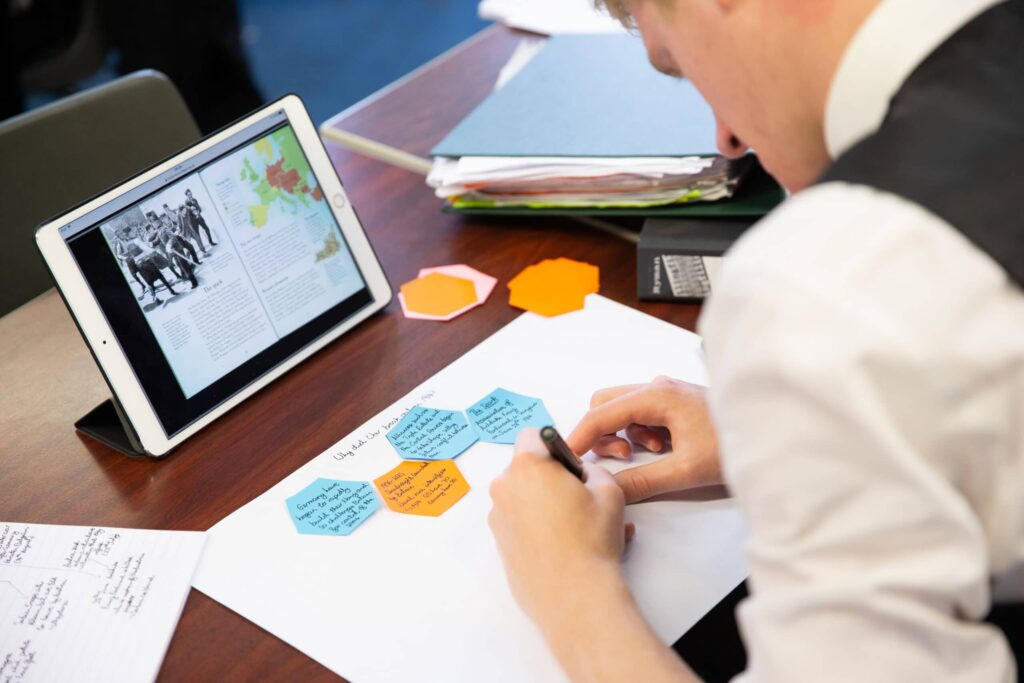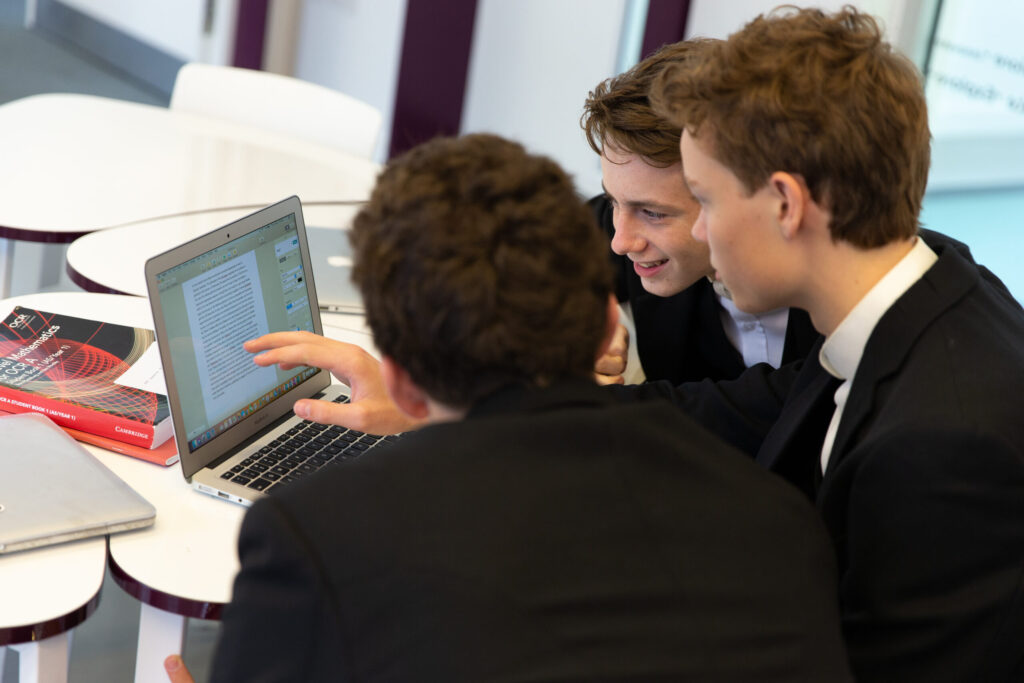Jonathan Beale, Researcher-in-Residence, CIRL
The most salient absence we have felt during lockdown is the company of others. One of the things to which our attention has been most drawn is the importance of community. This has also been one of the most important features of education that students have missed since educational institutions closed worldwide. Schools and universities provide intellectual and social communities. These are fostered not only through social spaces, but also in the classroom: a class is an intellectual and social community, and classroom environments foster intellectual and personal bonds between students and between the teacher and the class. (For ways to foster a community that imitates the classroom community when teaching online, see this earlier blogpost.)
The importance of community is becoming greater as we address the challenges we now face in education – both the new challenges and those that have been given greater urgency by the pandemic. Fruitful co-operation between the members of a community requires effective collaboration. What kind of collaboration is needed to foster the community support required to address the challenges raised and exacerbated by Covid-19?

1. The impact of the lockdown on inequality
The lockdown has resulted in half the world’s student population being out of school or university. Many of these students have received little or even no formal education during school closures. As reported on the front page of the Times last week, two studies show that a fifth of UK children – two million pupils – ‘have done little or no schoolwork at home during lockdown’, with ‘little’ being defined as less than an hour a day. Most of those who have not continued to receive formal education are students with very limited access to the internet and technology. The vast majority of these are from disadvantaged families.
The pandemic has precipitated a regression of much of the progress made over the past decade in reducing educational inequality. A recent report published by the Education Endowment Foundation (‘EEF’), ‘Impact of school closures on the attainment gap’,[1] outlines global projections that ‘suggest that school closures will widen the attainment gap between disadvantaged children and their peers, likely reversing progress made to narrow the gap since 2011’, with a median estimate indicating that the gap will widen by 36%. Estimations of the rate the gap will widen vary from 11 to 75%.[2] Covid-19 has thereby placed greater responsibilities upon individuals, institutions and states to alleviate inequality – both in the education students receive, and in the ways that education can be used as a means of reducing socioeconomic inequality by improving social mobility.
2. Learning loss
School closures have resulted in a significant loss in learning for students and the impact is greater for those who are disadvantaged. This is supported by existing evidence from studies on the effects that school summer holidays have on learning. Research shows that attainment gaps widen during summer breaks. The recent EEF report focuses on the impact of school closure on the ‘disadvantage gap’: ‘the interaction between the amount of summer learning loss and students’ socioeconomic status’.[3] The report draws attention to the most recent systematic review of the evidence on ‘summer learning loss’,[4] which covers over a hundred years of research and estimates that in reading and language, ‘on average, summer vacations [create] a gap of about 3 months between middle- and lower-class students’.[5] It does not, however, show any differential effect in the mathematics skills of middle- and lower-class students.[6] It should be noted that the studies in that review are mostly of schools in the USA, where summer breaks are typically around twice as long as those in the UK.
3. Greater emotional and social support
Learning catchup is, therefore, an area on which schools need to focus. There is also an increased need for social and emotional support for students. As Laura Partridge writes in a recent article on the kind of collaboration needed to provide the long-term change and support required by schools,[7] evidence suggests that the pandemic has increased the needs for greater social and emotional support. With many parents and carers facing unemployment, reduced income or lower job security following the crisis, there will be a rise in child poverty. There is a greater likelihood that families in smaller and overcrowded homes without gardens have experienced conflicts at home. There has been an increase in the number of calls made by children to Childline during lockdown and there was a 50% increase in calls to the national domestic abuse helpline during the first three weeks. The increase in time spent online by many children puts them at higher risk of online grooming and cyberbullying.
A heightened focus on learning catchup should not come at the expense of greater support for students’ emotional and social needs. Indeed, too much focus on learning support could exacerbate the heightened emotional and social needs students and their families have experienced as a result of the pandemic, by increasing stress and anxiety further.
These two challenges – learning catchup and providing greater emotional and social support for students – are huge. Partridge argues that this dual challenge cannot be met by schools alone. The demands placed on schools to meet these needs were already unsustainable before Covid-19, and with the demand for additional support likely to significantly rise, ‘we need a fundamental shift towards schools being an anchor for, but not the provider of, a comprehensive range of state and community support for children’. Additionally, to avoid overloading responsibilities on teachers and overloading their time, Partridge argues that we need to either ‘protect staff time or re-introduce family workers’ – a role she notes was ‘prevalent in schools through the early 2000s, but much more infrequently found since funding cuts to the programme that introduced them’, as explored in the RSA’s report on Schools Without Walls.
Addressing these challenges requires an effort going beyond students, educators, schools and universities. At the national level, it requires reform at government policy level and significant investment in new schemes. At the international level, it requires increased and more focused collaborative international strategies. In general, to help meet these challenges, a greater amount of effective collaboration is required, among and between supportive networks.
4. Collaboration in education
Effective collaboration offers the means for improving education in terms of educational development, innovation, reform, research and strategy, and the sharing of resources. It is also important for reducing inequality – both in education and at the socioeconomic level, nationally and internationally. This needs to go beyond collaboration between educational institutions: it needs to involve governmental and non-governmental organisations, councils, local communities and pupils’ families.
Questions concerning what constitutes effective collaboration in education and how to best collaborate have been made more urgent by the Covid-19 crisis. Collaboration in education is an area where we may see major changes following the pandemic. We have recently been considering the opportunities that collaboration offers for improving education after the crisis and how to implement the changes needed in collaboration in response to the pandemic, in our webinar series on Collaboration in Education after Covid-19. The recording from the first webinar, on independent state school partnerships, is available here; the recording from the second webinar, on international collaboration, will be added soon. These webinars will provide valuable input into a report we are producing which outlines best practice for educational collaborations and partnerships. This report will build on the work done by Schools Together.
5. The RSA’s ‘collaboratives’ proposal
A promising proposal for the kind of collaboration needed for schools is offered in a new initiative by the RSA. In the article mentioned above, Partridge argues that we need to create and facilitate a ‘child-centred system’ of ‘collaboratives’: networks of collective responsibility across schools, youth work, social work, health, criminal justice and the voluntary sector in UK localities. The RSA’s ‘collaboratives’ initiative aims to provide such networks. Partridge outlines the aim of this initiative as follows:
‘The aim is to support the development of operational networks – collaboratives – that support school leaders to prevent exclusions. The aim will be to develop and deliver a shared vision and collective responsibility for children across schools, youth work, social work, health, criminal justice and the voluntary sector in each locality, resulting in improved outcomes for vulnerable children.‘
On this model of collaboration, schools are placed ‘at the heart of a wider community network protecting the safety, welfare, health and wellbeing of pupils’. While this might sound like a fundamental change, it can be understood as expanding on existing forms of collaboration between schools and wider community networks. Teachers already play an important role in identifying concerns with children, such as signs of abuse at home and making referrals to children’s services – a role that the lockdown has made extremely difficult for teachers to continue to fulfil. The initiative would involve schools collaborating with a wide support network comprised of voluntary and community organisations, as well as public services. It would aim to promote a sense of ownership and responsibility across these networks for creating better futures for local children. The RSA intend to pilot this scheme over the coming months.
Such collaboration has the advantage of creating and consolidating support networks around schools. These could provide wider assistance to address the heightened needs for pupils following Covid-19. Partridge writes:
‘Establishing supportive networks around schools as they open again could ensure that underlying needs are identified and responded to before they manifest in behaviours that lead to educational exclusion. Underpinning the RSA’s work is the belief that what is good for these children is good for every child; our aim is to create a framework for vulnerable children that will make the whole system more attentive to the wellbeing of all of our children.‘
The RSA aims to fund this programme with ‘support from funding partners and forward-thinking local authorities’, which they hope will generate a fund that will be available ‘to each collaborative to invest in interventions for the pupils identified as at risk’. Eventually they hope to ‘advocate for central government investment in the most effective collaborative approaches for supporting vulnerable children’.
6. The heightened importance of collaboratives for children in earlier years
The RSA’s proposal to create local collaboratives is all the more important for pupils in earlier school years. As we saw in an earlier blogpost, earlier educational levels benefit less from educational technology (‘ed tech’). At earlier stages of education, such as primary school, interpersonal interaction, between teacher and pupil and among pupils, is much more important for teaching and learning. As we saw in another CIRL blogpost, videoconferencing can imitate the community of a classroom, but that imitation can only go so far. The importance of interpersonal interaction has led to some primary schools requesting teaching assistance from pupils’ family members to a greater degree than the requests that have typically been made by secondary schools.
Primary teachers and headteachers identified the increase in parental responsibility in teaching and learning as one of the main challenges they’ve faced during school closures, in a recent CIRL online workshop on ‘challenges of remote learning in primary education’, led by Prof. Dame Alison Peacock, Chief Executive of the Chartered College of Teaching. One of the questions discussed in that workshop was, ‘What are the distinctive challenges presented by distance learning for primary school children?’. The themes in the responses revealed some of the limits of ed tech at the primary level.
Primary teachers and headteachers said that primary schools have been relying on pupils’ families to help with teaching, given the importance of group work and interpersonal collaboration. When material has been taught to primary school pupils remotely, it has often been taught by parents. Pupil peers have sometimes been replaced with what some primary school headteachers called ‘family hubs’ – asking a pupil’s family to be involved in the teaching and learning process, as a strategy to imitate the community learning environment provided by the classroom.
The heightened need that primary schools have had to place upon pupils’ families during school closures has, in turn, raised a further challenge: the uptake for this from parents and guardians has been hugely variable. Various factors influence the degree to which there has been uptake, such as the number of children in the household and their ages, the family members available to assist with teaching, and the availability of areas in the household which can be used as imitation classroom spaces.
The importance of parental involvement in children’s learning is one of the two factors identified in the recent EEF report that affect learning while pupils are at home (along with remote learning).[8] EEF research suggests that parental ‘engagement in children’s learning and the quality of the home learning environment are associated with improved academic outcomes at all ages’.[9] But the recent EEF report also suggests that schools ‘may need support in communicating effectively with parents and in helping parents understand specific ways to help their child learn’.[10] (The EEF recommend several strategies for primary and secondary pupils[11] and offer resources for schools to support parents during school closures.)
Fostering effective partnerships between families and schools – for example the ‘family hubs’ set up in collaboration between some primary schools and families mentioned above – can be beneficial for pupils. Recent research by the RSA on preventing school exclusions suggests that pupils’ educational outcomes, attendance and behaviour can be improved through close partnerships between schools and pupils’ families.
This gives further support to the need for the kind of initiative proposed by the RSA. Wider networks can help to provide support to parents and families and lessen the increased responsibilities and demands placed on schools after Covid-19.
7. An ‘army of teachers’
Robert Halfon, chairman of the Commons education select committee, recently advised the Prime Minister to set up a ‘national education army’ to address the issues arising in education following the pandemic. His recommendation was that the Prime Minister should commit funding to a national initiative to hire retired teachers, school inspectors and students to teach classes for pupils in spaces such as school gyms and church halls, and to set up temporary schools in public buildings.
If an ‘army of teachers’ were recruited, a crucial role they should help to fulfil lies beyond the classroom: to support the development of wider support networks for students and schools to meet the challenges they now face.
[1] Education Endowment Foundation, ‘Impact of school closures on the attainment gap: Rapid Evidence Assessment’, 2 June 2020, p. 4. Cited in this blogpost as ‘EEF’.
[2] EEF, p. 4. The EEF report follows the Department of Education’s definition of ‘disadvantaged pupils’: ‘those who were registered as eligible for free school meals at any point in the last six years, children looked after by a local authority or have left local authority care in England and Wales through adoption, a special guardianship order, a residence order or a child arrangements order’ (EEF, p. 13, n. 7).
[3] EEF, p. 5.
[4] H. Cooper, B. Nye, K. Charlton, J. Lindsay & S. Greathouse , ‘The effects of summer vacation on achievement test scores: A narrative and meta-analytic review’, Review of Educational Research, 66(3) (1996), pp. 227-268.
[5] Ibid., p. 261, quoted in EEF, p. 5.
[6] Ibid.
[7] Laura Partridge, ‘No School an Island’, Medium, 1 June 2020.
[8] EEF, p. 20.
[9] Ibid.
[10] Ibid.
[11] Ibid.




